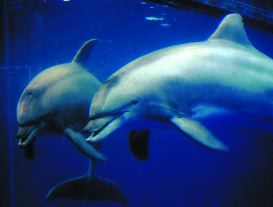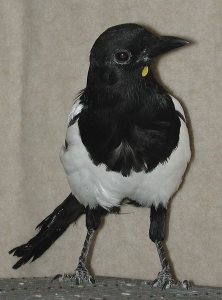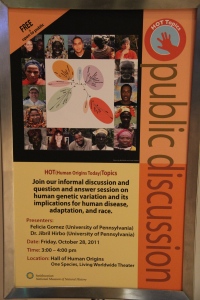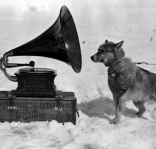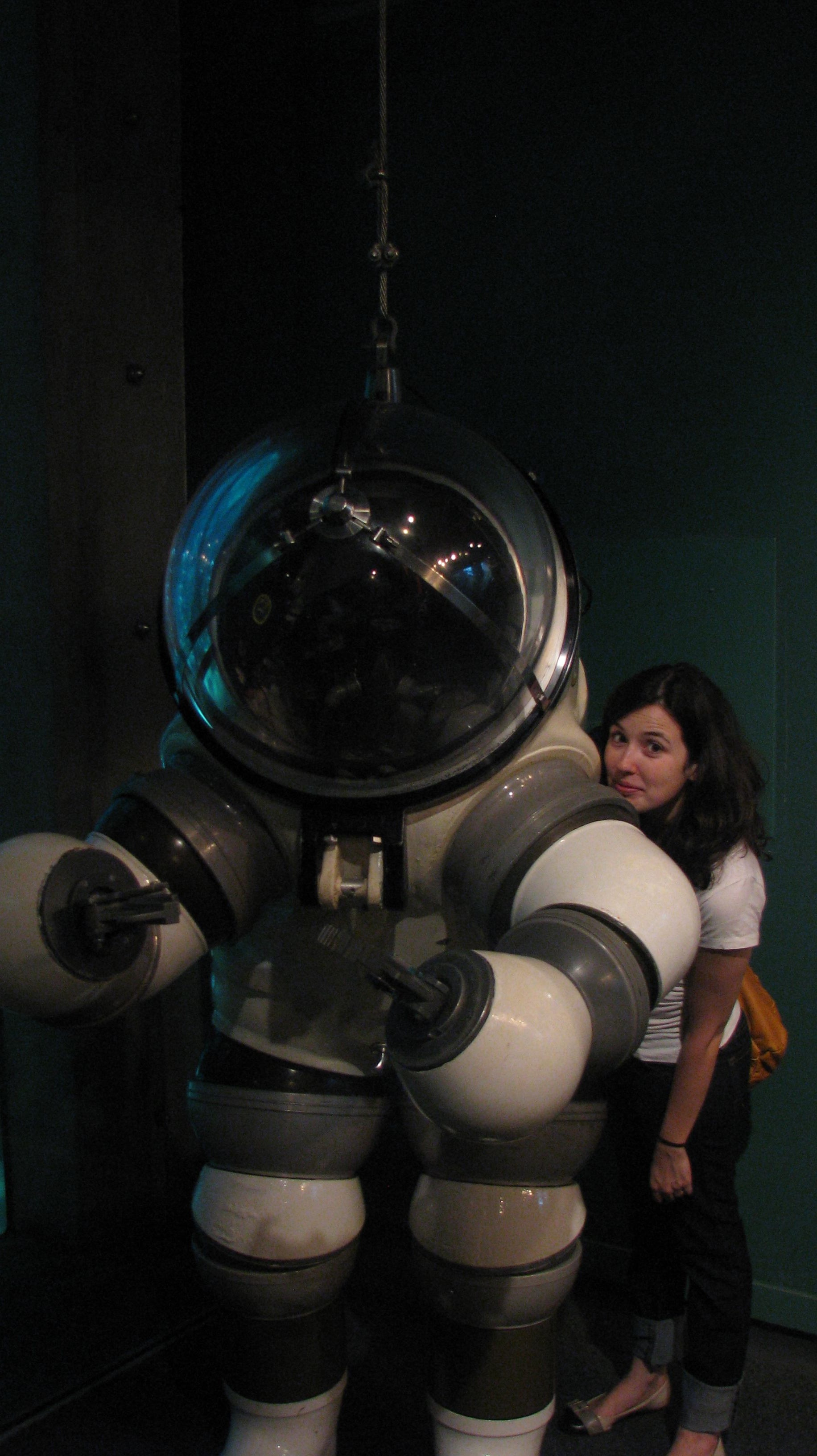What happens when you place a mirror inside a dolphin tank? Diane Reiss performed that experiment with bottlenose dolphins, and described the results in the book The Dolphin in the Mirror.
The mirror self recognition (MSR) test has been designed to identify self-awareness in animals. When looking at the mirror, can the animal interpret the image as a reflexion of another animal (as opposed to some meaningless image)? Can it associate that animal with himself? Identify himself as an entity? The mirror test is a simplified way to answer those questions, and was originally created by Gordon Gallup in the 70’s. Chimps were the first to pass the mirror test, followed by the remaining great apes (orangutans, gorillas), bonobos and gibbons. Here’s a baby chimp during the mirror test:
Are primates the only animals with self-awareness?
Dolphins have large brains, complex social structures, and ability to express empathy. Could self awareness be added to that list? A dolphins starts to seem like the perfect candidate for the mirror test.
Marten and Pasarkos initially applied the mirror test in bottlenose dolphins, followed by Reiss and Marino, who published their work in a PNAS paper. In both cases, mirrors were placed inside the dolphin’s tanks. Marten and Pasarkos mentioned the dolphins quickly respond to the mirror, and described their reaction as: “when a dolphin looks in a mirror it often opens its mouth and moves its head around in some rhythmic fashion”. For the authors, it seems clear that the dolphin is looking at himself, instead of randomly swimming around. Diane Reiss went a step further and replaced the tank mirror with a much smaller one, in the hopes to quantify time spent by the dolphin in that small section of the tank. The book publisher released some of Reiss’ videos os dolphins in the mirror, so you can see for yourself:
To make sure the dolphins were looking at themselves, Reiss performed the mark test: she applied visible marks and invisible sham-marks (with zinc oxyde or harmless markers) in the dolphin’s body, as shown in the picture below.
After marking, the dolphins would immediately inspect themselves in the mirror, positioning their body so they could see the mark. Primates would also touch and scratch the mark, but this proves difficult when an animal has no hands. Reiss and co-workers saw the dolphins rubbing their head at the tank walls after marking, presumably trying to remove the mark they just saw in the mirror.
Perhaps the dolphin is not the perfect candidate after all. How do we translate the mirror and spot test for dolphins, who have no hands and live in an aquatic environment? Perhaps the mirror test is not a perfect test. How do we adapt the test? Dolphins spend less time in front of the mirror than primates, and Martin and Pasarkos attribute it to the fact that dolphins are more “mobile” and less likely to stand still in front of an object. They are also highly social, so their interest in the mirror decreased with the increasing presence of other dolphins. Those are signs of emerging challenges when analyzing a marine mammal with a test that was designed for a primate. (Orcas were also studied, with similar results).
 (Photo credit: Plotnik et al, PNAS 2006)
(Photo credit: Plotnik et al, PNAS 2006)
Enters an animal that, even without hands, has a structure adapted for touching and inspection of a mark: an elephant’s trunk.
Diane Reiss went on to collaborate with an elephant self-awareness study. Elephants then passed the mirror test on 2006 (See mirror placement scheme in the image above), and the findings were published by Plotnik et al (PNAS 2006). Elephants also have big brains and display complex social behavior, and exhibited analogous mirror inspecting behavior when marked:
 (Photo credit: Prior et al, PLoS Biology 2008)
(Photo credit: Prior et al, PLoS Biology 2008)
The mirror test, however, is not universal. It is argued that this test is not an absolute measurement of self-awareness. An animal might not know what the mirror is, or not be interested in investigating spots (people suffering from Prosopagnosia – inability to recognize faces – also do not recognize themselves in the mirror). I still think it is a somewhat straightforward way to gain insight into many animal species. I wonder who is going to pass the test next!

